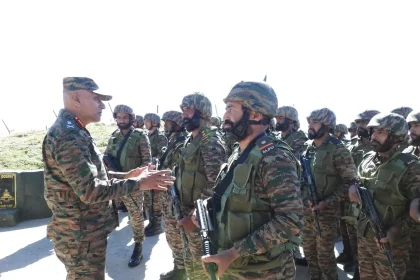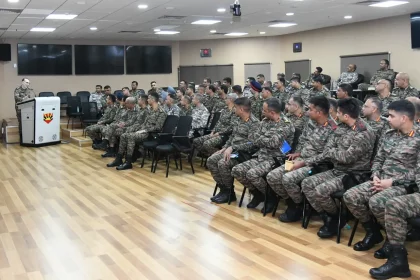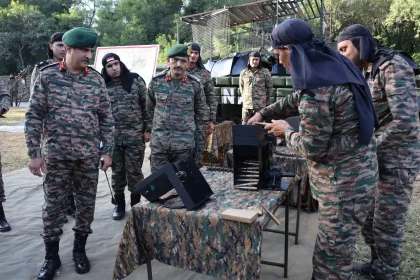Lt Gen Pratik Sharma Reviews Operational Preparedness in Forward Areas of Rajouri
Northern Command Chief Praises Troops’ Professionalism, Urges Focus on Innovation and Rapid Response.
Admiral Dinesh K Tripathi Meets 14-Year-Old National Sailing Champion SK Rameeza Bhanu, Symbol of Nari Shakti and Resilience
Young Champion’s Journey from Homelessness to National Glory Wins Praise from the Navy Chief.
Higher Command Course Officers Visit Eastern Command Headquarters in Kolkata
Visit Strengthens Strategic Understanding and Theatre-Level Insight Among Future Senior Army Leaders.
Lieutenant General Rajesh Pushkar Reviews Operational Preparedness of Black Arrow Brigade Under Kharga Corps
Lt Gen Rajesh Pushkar, GOC Kharga Corps, reviewed the operational preparedness of the Black Arrow Brigade and commended all ranks…
IMA Cadets Conclude Cadet Exchange Program in Australia
Cadets from the Indian Military Academy (IMA), Dehradun, concluded their Cadet Exchange Program at the Royal Military College (RMC), Duntroon,…
Indian Air Force Honours Squadron Leader Ved Prakash (Retd) on His 100th Birthday
The Indian Air Force felicitated Squadron Leader Ved Prakash (Retd) at his New Delhi residence on his 100th birthday, honouring…






